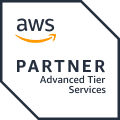In the age of the cloud, controlling costs in a database is more critical than ever. Microsoft Azure Cosmos DB is at the top of the list for companies because of its performance, global distribution, and scalability. Still, understanding its pricing structure is key to achieving the best performance for cost efficiency.
In this blog, we will provide an in-depth overview of Azure Cosmos DB's pricing model, describe its most notable features, and offer some suggestions for cost reduction. By the end of this blog, you will learn to optimize profits from spending too much on Cosmos DB.
What is Microsoft Azure Cosmos DB?

Azure Cosmos DB is a NoSQL fully hosted database service with different supported data models such as documents, key-value pairs, graphs, and column-family. It is recognized for having a global reach with multiple active replicates, client-stable sets, low latency data retrieval, and five levels of consistency that can be offered to customers, which address varying company needs.
Key Features
Global Distribution: Guarantee access with low latency from any location by replicating data globally.
Automatic Scaling: Flexible resource allocation based on the current workload.
Multi-Model API Support: Provide API access for MongoDB, Cassandra, Gremlin, SQL, and more.
Use Cases
Real-time analytics
Multi-region e-commerce platforms
IoT applications
Tailored customer interactions
Regardless of whether you are developing a startup application or an enterprise product, Cosmos DB provides unparalleled agility and dependability.
How Azure Cosmos DB Works
To grasp the expenses associated with it, one must understand how Azure Cosmos DB is structured and how it manages data.
Core Concepts
Containers are defined as subset groups of Items (rows/records) that are logically arranged within a database.
Items constitute the smallest fragment of information which can take the form of documents in JSON, also described as a single unit.
Request Units utilized for carrying out chunks of work like reading, writing, or querying data in a database.
Partitioning and Global Distribution
Partitioning helps to achieve scalability by slicing your data into pieces (partitions) using the provided partition key. Global distribution lets you replicate data across multiple regions for consistency and reliability.
Deep Dive into Azure Cosmos DB Pricing Structure
Pricing models are specific to the patterns of use for Azure Cosmos DB. Let’s break them down along with their costs:
1. Standard Provisioned Throughput Model

Standard Provisioned Throughput suggests one can allocate effort as one manages capacity through pre-assigning RU/s specific to an allocation group and its demand emulated by the general workload.
Minimum Throughput: It starts at 400 RU/s and is adjustable in steps of 100 RU/s through the Azure portal or programmatically via API.
Standard Pricing:
$0.008 per 100 RU/s per hour for single-region write accounts without multi-region distribution or availability zones (AZ).
Multi-region write accounts or accounts with AZ have adjusted pricing (e.g., $0.016 per 100 RU/s per hour for multi-region writes).
Discounts available through Reserved Capacity for 1 or 3 year commitments (up to 30%).
Billing: Hourly costs based on metered throughput to your database or container.
Good For: Applications with consistent and predictable workloads as well as large or critical performance requirements.
2. Serverless Model

Serverless model has no minimum operations or required throughput provisioning, charging only for the database activity performed and storage used. This approach allows for in-the-moment resource allocation without prior management planning, operating under a pay-per-request model.
Cost Details:
Serverless Request Units: $0.25 per 1,000,000 RU
With Availability Zone: $0.25 per 1,000,000 RU x 1.25
Good For: Small applications, development, testing, or workloads with low or erratic traffic.
3. Autoscale Provisioned Throughput Model

Autoscaling removes the labour of managing capacity by adjusting throughput from 10% to 100% of a predetermined maximum RU/s. Autoscaling manages spending during non-peak hours while scaling to the necessary levels during peak traffic. These lower limits can be set as low as 1,000 RU/s through the Azure portal or API.
Cost Details:
Single-region write account: $0.012/hour (based on 100 RU/s x 1.5 x 1 region).
Single-region write with data distributed across multiple regions: $0.012/hour per 100 RU/s x 1.5 x N regions.
Multi-region write account: $0.016/hour per 100 RU/s x N regions.
Note: Availability zones incur no additional charge with autoscale provisioned throughput.
Good For:
Automatically scales to meet demand without manual configuration.
Cost-sustainable for services with variable workloads.
Pricing is based on the peak RU/s consumed in an hour, optimising the pay-as-you-go policy.
Additional Pricing Factors

Storing transactional storage costs $0.25 per GB per month.
Analytical storage is more affordable at $0.02 per GB per month.
Companies need to analyze the data type and usage frequency to avoid unnecessary storage expenses.

The initial two periodic backups are complimentary. From the third backup onwards, incremental backups or continuous backups become chargeable $0.12 per copy per month.
Continuous backups incur higher costs, they offer better data recovery options. Assess backup needs accordingly and put emphasis on critical data only.
Multi-Region Writes: Enabling multiple write regions for global access comes with considerable costs as multiple replicas of the data across various regions have to be maintained.
Indexing Costs: Automatic indexing increases dataset query speed but also adds additional expenses, especially for larger datasets. Failure to index non-primary datasets affords significant savings.
Selecting the appropriate pricing model as well as the type of storage features allows efficient management of company costs on Azure Cosmos DB without hindering their performance and scalability requirements.
Optimizing Azure Cosmos DB Costs
Keeping performance in consideration, managing costs for Azure Cosmos DB can be handled with ease. Here are a few strategies that can help you manage your costs effectively:
1. Right-Size Your Database
Choose the right consistency level: Each application has different requirements; higher grades of consistency incur more RUs, so ensure to calculate and set the level that does not overspend.
Streamline queries: Avoid excess RU cost by employing the Request Unit Cost Estimation APIs to analyze and streamline your queries. Make sure you fetch the best value for the interfaces you employ.
2. Optimize Partitioning
Construct a better partition key: The right partition key does not only ensure data is uniformly distributed across partitions but avoiding load over certain partitions also enhances performance while minimizing costs.
3. Use Time-to-Live (TTL)
Automatically delete old data: Switching TTL on will ensure the removal of expired or irrelevant data; automatically boosting your storage optimization and saving costs.
Tools to Monitor and Reduce Costs
Azure Cost Management: Set limits and goals on cost and track and analyze where money is spent.
Azure Advisor: Provides personalized recommendations on ways to cut costs while improving efficiency levels.
Query Stats API: Helps in identifying unnecessary or expensive operations related to database work which can be optimized, thus saving RUs.
Case Study: TomTom's Journey with Azure Cosmos DB
TomTom is changing the landscape of turn-by-turn navigation and now ‘infotainment’ with its AI-powered digital cockpit. Built with Azure OpenAI Service, Azure Cosmos DB, and Azure Kubernetes Service, this infotainment system enables automakers to save up to 80% in costs while allowing drivers to have a seamless hands-free experience with voice-controlled interfacing.
Key results:
Cost savings: Automakers cut costs by up to 80% with a more efficient, sustainable system.
Improved response times: Driver query response time reduced from 12 seconds to 2.5 seconds.
Accuracy: 95% of complex driver requests were comprehended and responded to by the assistant.
Scalability: Azure Cosmos DB provides means for global scalability and low-latency performance.
Comparing Azure Cosmos DB with Other Database Solutions
Understanding how Cosmos DB stacks up against alternatives can guide decision-making:
Feature | Azure Cosmos DB | Traditional Databases |
Global Distribution | Available | Limited |
Performance | Single-digit latency | Variable |
Pricing | Pay-as-you-go; auto-scale | Fixed upfront costs |
Flexibility, speed, and multi-region redundancy make Cosmos DB the choice to go for. If the tasks require static, small-scale data, the traditional solutions are more reasonable.
Future-Proofing Azure Cosmos DB Costs
Scalability for Growth
Planning out the desired workloads through autoscale, and reserved capacity pricing models enables future workloads.
Continuous Cost Optimization
Regularly track RU consumption and adjust provisioning as needed.
Utilize free-tier and Azure credits for development and testing.
With an ever-changing set of requirements from today’s applications, Azure Cosmos DB supports unparalleled performance and flexibility, however, optimization is fundamental for sustainable value over time.
Conclusion
The various pricing models and powerful features available with Azure Cosmos DB offer companies easy access to advanced database tools, but careful consideration towards strategic planning must be made to avoid overspending. Optimize based on workload type, global needs, and usage patterns.
Join Pump for Free
If you are an early-stage startup that wants to save on cloud costs, use this opportunity. If you are a start-up business owner who wants to cut down the cost of using the cloud, then this is your chance. Pump helps you save up to 60% in cloud costs, and the best thing about it is that it is absolutely free!
Pump provides personalized solutions that allow you to effectively manage and optimize your Azure, GCP and AWS spending. Take complete control over your cloud expenses and ensure that you get the most from what you have invested. Who would pay more when we can save better?
Are you ready to take control of your cloud expenses?



